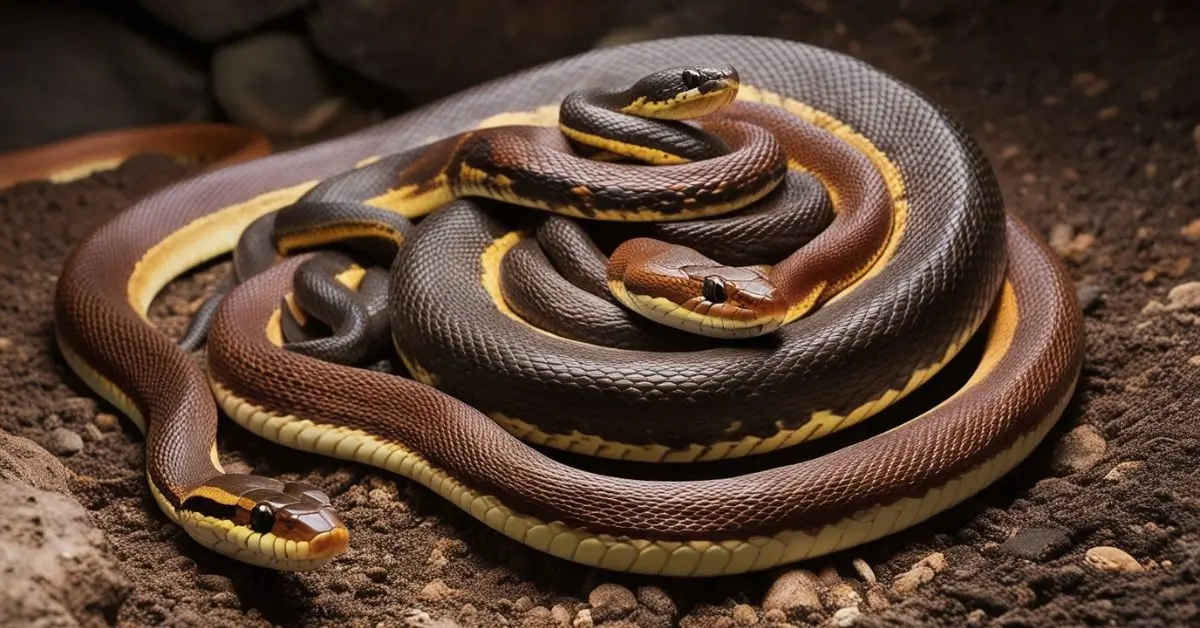Snakes are one of the most misunderstood creatures in the animal kingdom. Despite their ecological importance, snakes often evoke fear and fascination in equal measure. One of the most intriguing aspects of snakes is the idea of a “snake nest.” The term “nest” conjures images of birds carefully constructing a home for their eggs, but when it comes to snakes, the reality is a bit different. This article explores the concept of a snake nest, diving into the habitats and behaviors of various snake species, the myths surrounding snake nests, and their role in the ecosystem.
What is a Snake Nest?
The term “snake nest” is often used colloquially to describe any place where multiple snakes are found together, especially during mating seasons or when they hibernate. Unlike birds or mammals, snakes do not build traditional nests made of twigs, leaves, or mud. Instead, they utilize natural shelters such as underground burrows, rock crevices, fallen logs, or even abandoned nests of other animals to lay eggs or hibernate.
Snakes that lay eggs—known as oviparous species—will sometimes find a secure, warm place to deposit their eggs. Some species even exhibit maternal care, guarding the eggs until they hatch. On the other hand, live-bearing species (ovoviviparous or viviparous) give birth to fully formed young without the need for a nest.
Types of Snake Nests
- Egg-laying Nests (Oviparous Snakes) Many snake species are oviparous, meaning they lay eggs. These snakes typically seek out warm, secluded areas to deposit their eggs. The warmth is crucial because snakes are cold-blooded and rely on external heat sources to regulate their body temperature.
Some common locations where oviparous snakes lay their eggs include:
- Underground burrows: Many species, such as the king snake and rat snake, seek out abandoned rodent burrows or dig into soft soil to deposit their eggs. The temperature underground provides a stable environment, helping the eggs to incubate.
- Rotting vegetation: Snakes like pythons are known to lay eggs in decomposing plant matter, which generates heat through the process of decomposition. This helps to warm the eggs.
- Under rocks or logs: Snakes may also use the shelter of rocks or fallen logs to hide their eggs from predators and protect them from the elements.
In most cases, the female snake leaves the eggs to incubate on their own, although some species, like the king cobra, stay with the eggs and guard them until they hatch.
- Live-bearing Species (Ovoviviparous and Viviparous Snakes) Not all snakes lay eggs. Some species, such as rattlesnakes and garter snakes, give birth to live young. These snakes do not build nests in the traditional sense. Instead, they find a safe and warm place to give birth, such as a rock crevice or under dense vegetation.
- Communal Dens (Hibernacula) One of the most common uses of the term “snake nest” is in reference to communal dens, or hibernacula, where snakes gather in large numbers to hibernate during the colder months. This behavior is most commonly observed in temperate regions where snakes need to find a stable, warm environment to survive the winter.
Hibernacula are often underground, in burrows or caves where the temperature remains relatively stable throughout the winter. Snakes from various species may share a den, creating a large “nest” of intertwined bodies. These communal dens provide the warmth and protection necessary for snakes to survive the cold.
Notable Snake Nesting Habits
- King Cobra Nests The king cobra, the world’s longest venomous snake, is unique in that it actually builds a nest for its eggs. Using its body, the female king cobra gathers leaves, twigs, and other plant materials into a mound where she deposits her eggs. She then guards the nest fiercely until the eggs hatch, which is a rare behavior among snakes.
- Rattlesnake Birthing Areas Rattlesnakes are live-bearers, and while they don’t build nests for eggs, they often give birth in secure, hidden locations. Some species, like the timber rattlesnake, return to the same birthing sites year after year, with multiple females using the same general area to give birth. These locations provide warmth and protection for the young snakes, which are born fully independent and able to hunt.
- Garter Snake Hibernacula One of the most famous examples of communal snake nesting is seen in garter snakes. In regions like Manitoba, Canada, garter snakes gather in massive numbers—sometimes in the tens of thousands—in underground hibernacula to survive the harsh winter. When spring arrives, the snakes emerge from their dens in a remarkable spectacle, writhing together as they disperse into the surrounding environment.
The Myth of the Snake Pit
The idea of a “snake pit” or a nest full of venomous snakes has long been a part of human folklore and mythology. Ancient civilizations often depicted snake pits as places of punishment or as ominous natural formations. The fear of stumbling upon a writhing mass of dangerous snakes is a common theme in stories and films.
In reality, snake pits rarely exist as they are portrayed in popular culture. While snakes may gather in large numbers for hibernation or during the mating season, they are generally non-aggressive unless provoked. Moreover, many snake species are non-venomous and play a vital role in controlling rodent populations and maintaining ecological balance.
The Ecological Role of Snake Nests
While the term “snake nest” may inspire fear in some, it’s important to recognize the ecological significance of these gatherings. Snakes are essential predators in many ecosystems, controlling populations of small mammals, birds, and insects. By keeping prey populations in check, snakes help to maintain a healthy balance in their environment.
Additionally, snake nests—particularly those used for egg-laying—provide important clues about the health of the environment. The presence of a thriving snake population often indicates a robust ecosystem with ample food and shelter.
Pest Control
One of the most direct benefits of snakes, particularly in their nesting areas, is the control of pest populations. Rodents, which can carry disease and damage crops, are a primary food source for many snake species. When snakes establish nests in areas with high rodent populations, they help to naturally regulate these numbers, reducing the need for human intervention through traps or poisons.
Biodiversity Indicators
Snake nests can also serve as indicators of biodiversity in an area. Regions that support a diverse range of snake species often have complex and healthy ecosystems. The presence of different snake species suggests that there are ample resources for a variety of predators, prey, and plant life, signaling ecological balance.
Human Encounters with Snake Nests
For most people, the idea of encountering a snake nest is terrifying. However, such encounters are relatively rare. Snakes are generally shy creatures that prefer to avoid human contact, and most will flee if they sense danger.
When snake nests are discovered, especially in residential areas, it’s important to remain calm and contact local wildlife experts who can safely remove the snakes if necessary. Killing snakes or disturbing their nests can disrupt local ecosystems and, in some cases, may even be illegal depending on the species and location.
Preventing Unwanted Snake Nests
Homeowners who live in areas with a high snake population may take preventive measures to avoid the presence of snake nests near their homes:
- Seal entry points: Snakes often use small openings to enter basements or sheds. Sealing these gaps can prevent snakes from nesting in such areas.
- Remove debris: Snakes may take shelter under piles of leaves, logs, or other debris. Keeping yards clear of such materials reduces the likelihood of attracting snakes.
- Control rodent populations: Since snakes are often drawn to areas with abundant prey, keeping rodent populations in check can make a property less appealing to snakes.
Conclusion
While the idea of a snake nest may be unnerving to some, it is a natural and important part of many ecosystems. Snakes, whether laying eggs or hibernating in communal dens, play a vital role in maintaining the balance of nature. Understanding the truth behind snake nests helps to dispel the myths and fears that surround these fascinating creatures. Instead of fearing snake nests, we can learn to appreciate the critical ecological functions they serve and take steps to coexist with these important predators.











